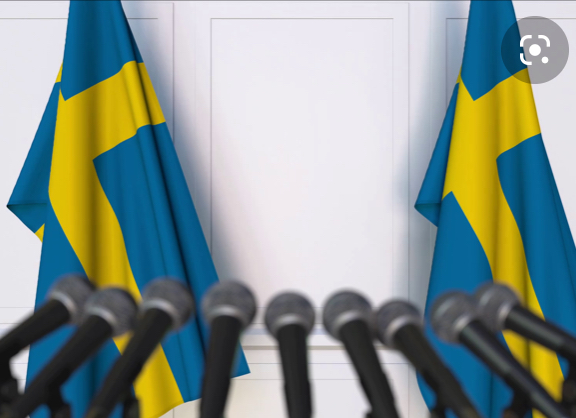
The Löfven government convened on Harpsund today for their annual team building session, getting together to consolidate their politics and vision for the coming year. The Swedish Green Party is attending as well, as government coalition partner, while the Center Party and Liberals will be listening carefully to see what signals the Social Democrats send out in regards to their agreed-upon 73-point plan.
What political ideas can be actualized depends on the economy, and how much the government can afford to spend. Minister for Finance Magdalena Andersson’s presentation and analysis of how much economic margin exists for any further reforms was the first day’s highlight – and/or the dark cloud hanging over all the bright ideas the government might come up with.
Andersson’s afternoon press conference didn’t hold any surprises, only an acknowledgement that the wind in Sweden’s economic sails is slackening a bit. Her deeper analysis will serve as the frame for the fall budget negotiations that need to be held with the Center Party and Liberals. Without these two parties on board, the budget risks failing in parliament – leading, if not to a new election, then at least to massive uncertainty and instability. Not good, in other words, for the Löfven government.
One reform already agreed upon by the four parties is getting rid of the emergency austerity tax (värnskatt) – an extra tax on high incomes. The tax was supposed to be temporary, but has been in place since 1995. Other reforms are almost a given as well: the ”free year,” a repris of ”year off for personal development” Green Party demand (that was roundly derided as a monetary black hole the first time around), and a reduced employer tax (arbetsgivaravgift) if the employee is a young person or a new immigrant. These reforms are already expected to cost 19 billion kronor, which doesn’t leave much over for new demands from cooperating parties or any unexpected expenses. Any worsening on the trade horizon, a harder than expected Brexit, or the complete collapse of the Italian government are a few of the worst case scenarios that the government (and the rest of us) are hoping don’t happen.
But, Andersson concluded with, Sweden has the muscles to meet the future. So far, then, no economic stimulus measures are in the works.
